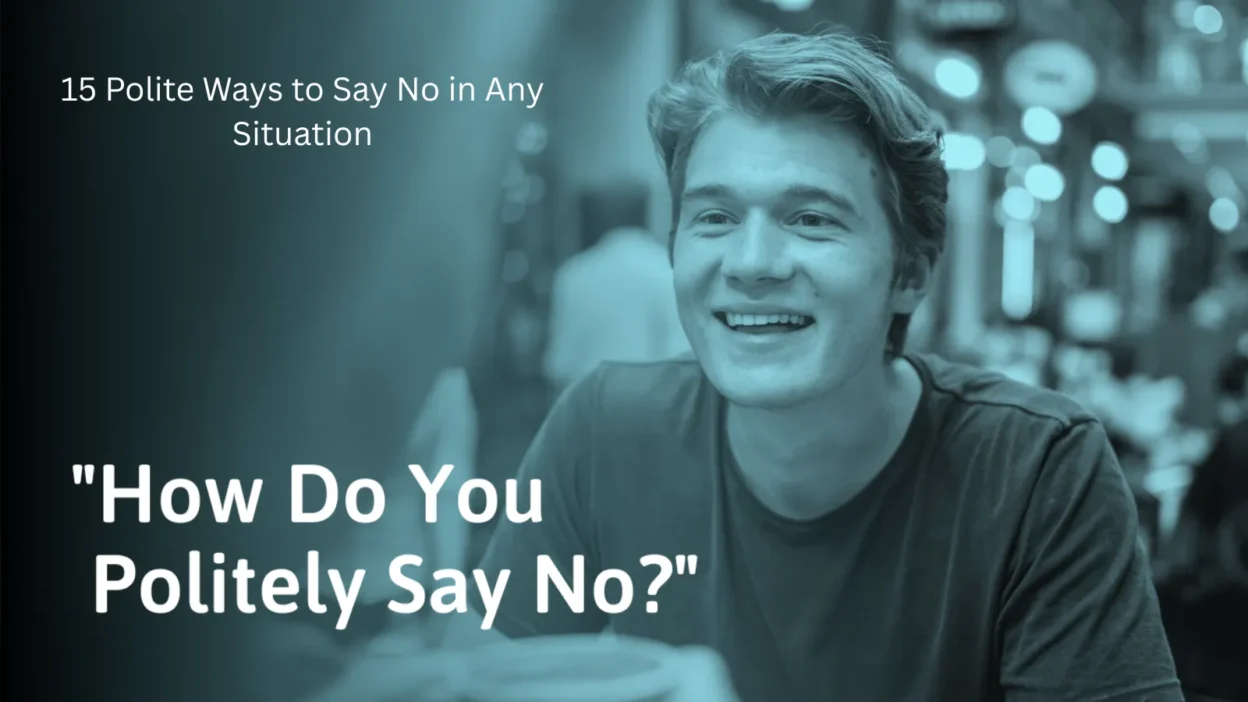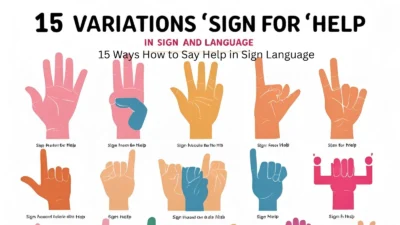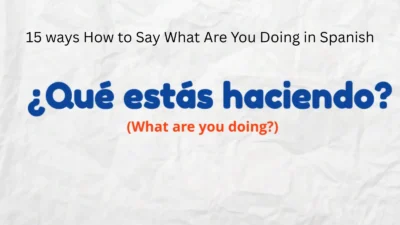Learning 15 polite ways to say no in any situation can help you communicate your boundaries with confidence while maintaining respect and kindness. Whether it’s declining a social invitation, turning down extra work, or refusing a request from a friend, knowing how to say no politely ensures you protect your time and energy without offending others.
In this guide, you’ll discover practical phrases, respectful responses, and real‑life examples that make saying no easier and more comfortable for both you and the other person.
By mastering these polite ways to say no, you’ll feel more in control of your decisions. Plus, you’ll build healthier relationships by setting boundaries in a considerate and thoughtful way.
How to Say No :
Here are 15 polite ways to say no in any situation, each with an example and a bit of background about when and where it’s best used.
1. No, thank you.
Origin:
A classic and universally accepted polite decline. The “thank you” softens the refusal.
Example:
👤 User A: Would you like some more coffee?
👤 User B: No, thank you. I’m good.
Use: Everyday situations, casual or formal. Very neutral and safe.
2. I appreciate it, but I’ll pass.

Origin:
Common in American English, especially in professional or social settings where you want to sound appreciative yet firm.
Example:
👤 User A: We’re organizing a karaoke night—want to join?
👤 User B: I appreciate it, but I’ll pass this time.
Use: Friendly yet clear; useful in social or work contexts.
3. I’m flattered, but I’ll have to say no.
Origin:
Often used when someone is offering you something with admiration or praise, such as a job or date offer.
Example:
👤 User A: You’d be perfect for this role. Are you interested?
👤 User B: I’m flattered, but I’ll have to say no.
Use: Respectful and warm for delicate situations.
4. Thanks for thinking of me, but I can’t.

Origin:
Popularized in business communication; focuses on gratitude before refusal.
Example:
👤 User A: Could you speak at our event next month?
👤 User B: Thanks for thinking of me, but I can’t commit right now.
Use: Shows appreciation while maintaining boundaries.
5. I’d love to, but I’m already booked.
Origin:
Professional phrasing used to decline without sounding disinterested. “Booked” sounds committed, not evasive.
Example:
👤 User A: Can you meet for lunch tomorrow?
👤 User B: I’d love to, but I’m already booked.
Use: Professional, polite, and honest.
6. Unfortunately, I have to say no.
Origin:
The word “unfortunately” adds a gentle tone, making the decline feel less harsh.
Example:
👤 User A: Would you be open to volunteering this weekend?
👤 User B: Unfortunately, I have to say no this time.
Use: Neutral; suitable for personal or professional refusals.
7. That’s not going to work for me.
Origin:
Used often in American business settings when declining proposals or offers.
Example:
👤 User A: Let’s schedule it at 7 a.m.
👤 User B: That’s not going to work for me. Can we try 10 a.m.?
Use: Assertive but respectful; good for negotiating alternatives.
8. Maybe another time.

Origin:
A soft and optimistic way to decline, leaving the door open for future engagement.
Example:
👤 User A: Want to go hiking this weekend?
👤 User B: Maybe another time—I’ve got plans already.
Use: Informal, friendly, and non-committal.
9. I wish I could, but I can’t.
Origin:
Common in empathetic speech; expresses regret to soften the impact of refusal.
Example:
👤 User A: Could you babysit for me tonight?
👤 User B: I wish I could, but I can’t.
Use: Caring tone; appropriate for friends and family.
10. Not this time, but thank you.
Origin:
Another variation that keeps the tone grateful and future-oriented.
Example:
👤 User A: We’re going out for dinner. Want to join?
👤 User B: Not this time, but thank you.
Use: Casual and warm; great for social invites.
11. I’m honored, but I’ll have to decline.
Origin:
Formal English used in professional, academic, or ceremonial situations.
Example:
👤 User A: Would you accept the nomination?
👤 User B: I’m honored, but I’ll have to decline.
Use: Formal and respectful; conveys dignity.
12. I’m going to have to say no for now.

Origin:
Adds a temporary tone—ideal when you want to leave open the possibility of a “yes” later.
Example:
👤 User A: Can we count you in for the project?
👤 User B: I’m going to have to say no for now, but I’ll check back later.
Use: Semi-formal, thoughtful, and non-final.
13. I’m not comfortable with that.
Origin:
Assertive language often used in boundary-setting conversations or when declining requests that conflict with personal values.
Example:
👤 User A: Could you lie for me just this once?
👤 User B: I’m not comfortable with that.
Use: Clear and firm; best when protecting personal ethics or boundaries.
14. Let me think about it and get back to you.
Origin:
Polite way to delay an answer when you’re unsure or want to say no more gently later.
Example:
👤 User A: Can you join the team for this urgent task?
👤 User B: Let me think about it and get back to you.
Use: Strategic delay; gives time to consider or plan a soft “no.”
15. It’s not a good fit for me right now.
Origin:
Common in job or opportunity rejections; signals thoughtful consideration.
Example:
👤 User A: We’d love for you to take this consulting role.
👤 User B: It’s not a good fit for me right now, but I appreciate the offer.
Use: Polite and professional; avoids negative tone.
Conclusion:
💡 Mastering 15 polite ways to say no in any situation empowers you to protect your time, energy, and well‑being without damaging relationships.
By using respectful language and thoughtful responses, you can decline requests confidently while showing empathy and understanding.
Remember, saying no politely is not about rejection—it’s about valuing your priorities and communicating them with kindness. The more you practice these polite ways to say no, the more natural and comfortable it will become in everyday life.



